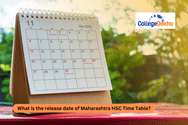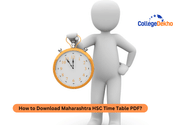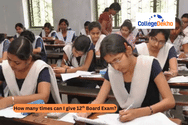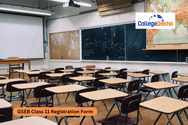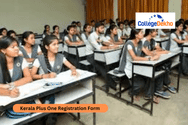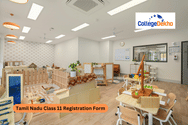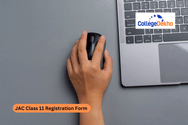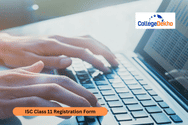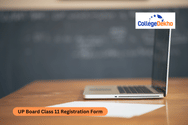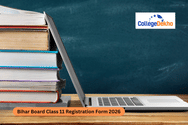- Which subjects include Practical Exams in Bihar Board Class 12?
- Bihar Board Class 12 Physics Practical Exam Syllabus 2026
- Bihar Board Class 12 Chemistry Practical Exam Syllabus 2026
- Bihar Board Class 12 Biology Practical Exam Syllabus 2026
- Bihar Board Class 12 Computer Science Practical Exam Syllabus 2026
- Bihar Board Class 12 Guidelines for Practical Exams 2026
- Faqs
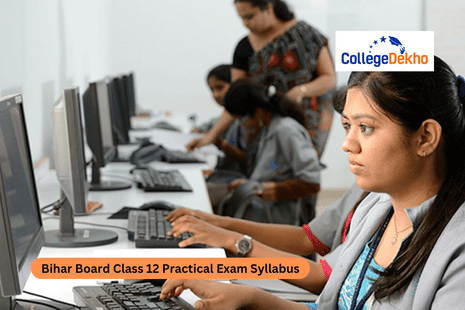

Never Miss an Exam Update
Bihar Board Class 12 Practical Exam Syllabus 2026 has been finalized by the board and provided it online. The board conducts the practical exam for Physics, Chemistry, Biology, and Computer Science. Each of the practical exams will be conducted for 30 marks and the theory exam will be of 70 marks. For each subject, a detailed syllabus for practical exams is provided in the article below. Ensure you do not miss any topic and prepare the complete syllabus in advance. The practical exams will be conducted before the theory exams. The
Bihar Board 12th Pracitcal Date Sheet 2026
will be shared by the schools, and the practical exams will be conducted within schools only. Continue reading the article for more information about the chapter-wise syllabus for practical exams.
Also Read -
Bihar Board Class 12 Exam Pattern 2026
Which subjects include Practical Exams in Bihar Board Class 12?
Bihar Board Class 12 practical exams will be conducted for all subjects of Science stream as well as Computer Science subject. For other subjects in the Commerce and Arts stream, internal assessments will be conducted. So, you can check out the detailed syllabus for practical exams here.
Bihar Board Class 12 Physics Practical Exam Syllabus 2026
Go through the Bihar Board Class 12 Physics Practical Syllabus given here.
Section - A
- To determine resistance per cm of a given wire by plotting a graph of potential difference versus current.
- To find resistance of a given wire using meter bridge and hence determine the specific resistance of its material.
- To verify the laws of combination (series / parallel) of resistances using a meter bridge.
- To compare the emf's of two given primary cells using potentiometer.
- To determine the internal resistance of given primary cell using potentiometer.
- To determine resistance of a galvanometer by half-deflection method and to find its figure of merit.
- To convert the given galvanometer (of know resistance of figure of merit) into an ammeter and voltmeter of desired range and to verify the same.
- To find the frequency of the AC mains with a sonomter.
ACTIVITIES
- To measure the resistance and impedance of an inductor with or without iron core.
- To measure the resistance, Voltage (AC/DC), current (AC) and check continuity of a given circuit using multimeter.
- To assemble a household circuit comprising ... three (on/off) switches, a fuse and a power source.
- To assemble the components of a given electric circuit.
- To study the variation in potential drop with length of a wire for a steady current.
- To draw the diagram of a given open circuit comprising at least a battery, resistor / rheostat. key. ammeter and voltmeter. Mark the components that are not connected in proper order and correct the circuit and also the circuit diagram.
Section - B
EXPERIMENTS
- To find the value of v for different values of u in case of concave mirror and to find the focal length.
- To find the focal length of a convex lens by plotting graphs between x and v or between 1/u & 1/v.
- To find the focal length of a convex mirror, using a convex lens.
- To find the focal length of a concave. lens, using a convex lens.
- To determine angle of minimum deviation for a given prism by plotting a graph between the angle of incedence and the angle of deviation.
- To determine refractive index of a glass slab using a travelling microscope.
- To find refractive index of a liquid by using i) concave mirror (ii) convex lens and plane mirror.
- To draw the I-V characteristics curves of a p-n junction in forward bias and reverse bias.
- To draw the characteristic curve of a zener diode and to determine its reverse break down voltage.
- To study the characteristics of a common emitter pn or pop transistor and to find out the values of current of such items.
ACTIVITIES
- To study effect of intensity of light (by varying distance of the source) on an LDR.
- To identify a diode, an LED, a transistor, and IC, a resistor and a capacitor from mixed collection of such items.
- Use of multimeter to -
(i) Identify base of transistor,
(ii) Distinguish between pn and pup type transistors,
(ii) See the undirectional flow of current in case of a diode and an LED, (iv) Check whether a given electronic component (e.g. diode, transistor or IC) is in working order.
- To observe refraction and later deviation of a beam of light incident obliquely on a glass slab.
- To observe polarization of light using two polaroids.
To observe diffraction of light due to a thin slit.
To study the nature and size of the image formed by -
(i) Convex lens
(ії) Concave mirror, on a screen by using a candle and a screen (for different distances of the candle from the lens / mirror)
- To obtain a lens combination with the specified focal length by using true lenses from the given set of lenses.
SUGGESTED INVESTIGATION PROJECTS
(i) To investigate whether the energy of a simple pendulum.
(ii) conserved
- To determine the radius of gyration about the centre of mass of a metre scale used as a bar pendulum.
- To investigate changes in the velocity of a body of the action of a constant force and determine it.
- To compare effectiveness of different materials as insulators of heat.
- To determine the wavelength of later beam by diffraction.
- To study various factors on which the internal resistance / em of a cell depends.
- To construct a time-switch and study dependence of its time constant on various factors.
- To study infrared radiations emitted by different sources using photo-transistor.
- To compare effectiveness of different materials as absorbers of sound.
10.To design an automatic traffic signal system using suitable combination of logic gates.
- To study luminosity of various electric lamps of different powers and make.
- To compare the Young's module of lasticity of different specimens of rubber and also draw their *elastic hysteresis curve.
- To study collison of two balls in two dimensions.
- To study frequency response of
(i) a resistor an inductor and a capacitor
(ii) RL Circuit
(iii) RC Circuit
(iv) LCR series circuit.
Bihar Board Class 12 Physics Practical Syllabus in Hindi
Go through the Bihar Board Class 12 Physics Practical Syllabus in Hindi from the images below.
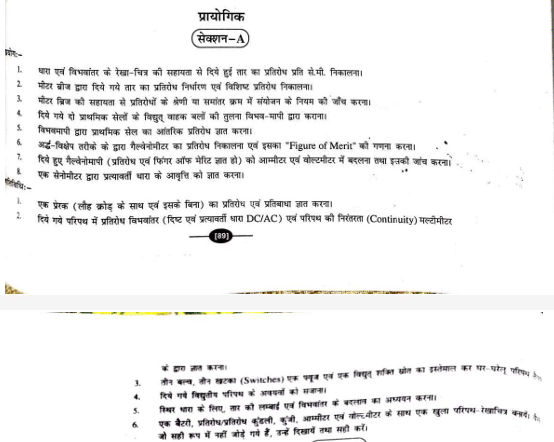
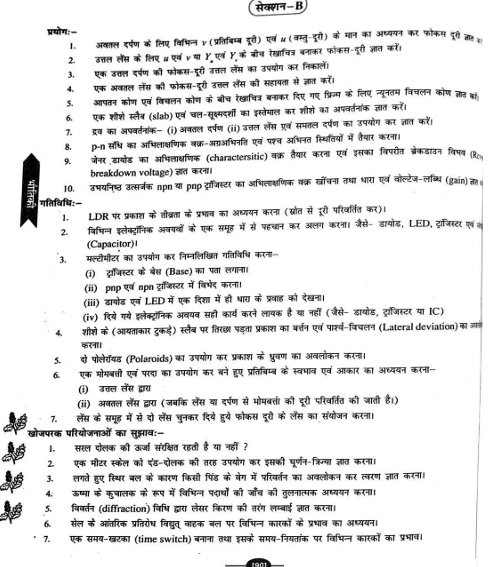
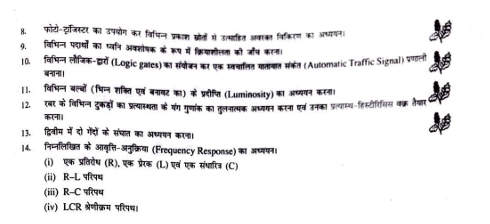
Also Read -
Bihar Board Class 12 Physics Syllabus 2026
Bihar Board Class 12 Chemistry Practical Exam Syllabus 2026
Check the detailed Class 12 Chemistry Practical Syllabus given here and prepare accordingly.
- (a) Preparation of two lyophilic sol and describe their characteristics. Lyophilic sol - Starch, egg albumin and gum.
(b) Preparation of two lyophilic sol and describe their characteristics. Lyophobie sol - aluminium hydroxide, ferric hydroxide, arsenious sulphide.
(c) Study of the role of emulsifying agent in stabilizing the emulsions of different oils and describe them in tabular form.
- (a) Effect of concentration and temperature on the rate of reaction between sodium thiosulphate and hydrochloric acid.
(b) Study of reaction rates of reaction between potassium iodate., KIO, and sodium sulphite : (Na, SO,) using starch solution as indicator.
- (i) Enthalpy of neutralization of HCI and strong basic NaOH.
(ii) Enthalpy of neutralization of NaOH and CH, COOH.
(iii) Determination of enthalpy of ionization on the basis of (i) and (il).
- Variation of cell potential in Zn/Z,"*//Cu'*/Cu with change in concentration of electrolytes (CuSO, or ZaSO,) at room temperature.
- Qualitative analysis: Dry and wet test for one anion and one cation in a given salt:
Cations - Pb2+,, Cu2+, Ca2+, Ba2+, Fe3+, Fe2+, Zn2+, Co2+, Mg2+, NH4+
Anions - CO32-, S2-, SO32-, NO22-, NO3-, I-, Br-, Cl-
Detection of nitrogen, sulphur, chlorine, bromine and iodine in an organic compound.
- Test for the functional groups present in Organic compounds :
Unsaturation, alcoholic, phenolic, aldehydic, ketonic, carboxylic and amino (primary) groups.
- Preparation of Inorganic Compounds:
(i) Preparation of double salt of ferrous ammonium sulphate or Potash alum. (ii) Preparation of Sasp.
- Titration: Determination of concentration/ molarity of KMnO, solution by titrating it agalinst a standard solution of :
(i) Oxalic acid
(ii) Ferrous ammonium sulphate
PROJECTS
- Study of presence of carbohydrate, fat and protein in the given material.
- Preparation of soyabean milk and its comparison with the natural milk with respect to curd formation. effect of temperature, etc.
- Study of the effect of potassium bisulphate / lemon as food preservative under various conditions (temperature, concentration, time etc.)
- Comparative study of the rate of fermentation of following materials: wheat four, gram flour, potato juice, carrot juice etc.
- Study of common food adulterants in fat, oil, butter, sugar, turmeric powder, chilli powder and pepper.
Note: Any other investigatory project, which involves about 10 periods of work, can be chosen with the help of the teacher.
Bihar Board Class 12 Chemistry Practical Syllabus in Hindi
The following image presents the detailed Bihar Board Class 12 Chemistry Practical Syllabus in Hindi. Check in detail.
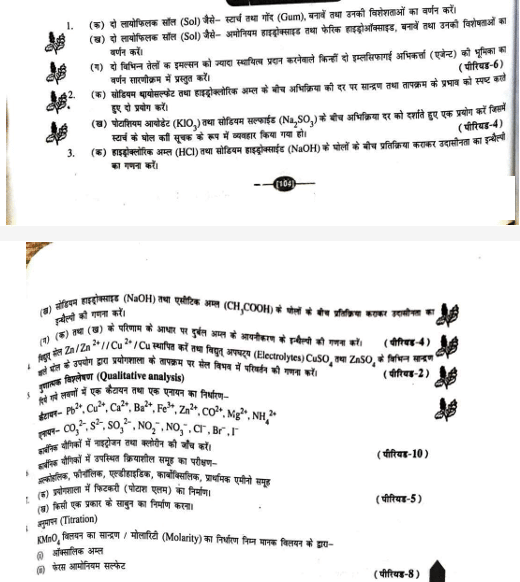
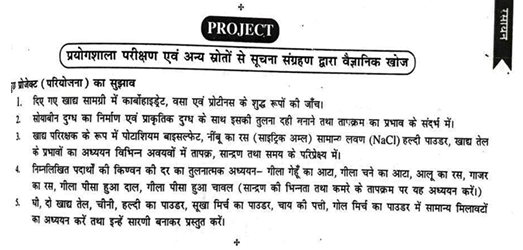
Also Read -
Bihar Board Class 12 Chemistry Syllabus 2026
Bihar Board Class 12 Biology Practical Exam Syllabus 2026
Here is the detailed syllabus for Bihar board class 12 Biology practical exam syllabus.
UNIT I - REPRODUCTION AND DEVELOPMENT
- Reproduction in plants - Types of reproduction, reproductive part of flowers, gametogenesis, pollination and fertilization; Development of seeds and fruits.
- Reproduction and development in Human - Reproductive system in male and female, Role of sex-hormones in the development of sexual characters, menstrual cycle, production of gametes (gametogenesis), fertilization, implantation, emrbyo, development, pregnancy and parturation, test tube baby (IVF).
- Reproduction Health - Birth control, contraception and sexually transmitted diseases (STDs)
Study of the reproductive parts of flower. Study of permanent slides of pollen tube growth on the stigma. Study of T. S. of ovary of gynoecium in temporary slide preparation to see ovules and its arrangement. Study of permanent slides of TS of mammalian testes and ovary to locate sperm and ovum and stages of gametogenesis.
UNIT - II: GENETICS AND ORGANIC EVOLUTION
- Introduction
- Mendelism - Mendel's experiments of monchybrid and dihybrid cross, Mendel's law of inheritance.
- Gene Interaction - Incomplete dominance, co-dominance, multiple alleles (blood groupings), Epistasis.
- Chromosome theory of inheritance, linkage and crossing over, cytoplasmic inheritance.
Sex-determination in human beings: XX, Xy, Sex-linked inheritance and cogenital discases ex. Haemophilia, colour blindness, Sickle celled anaemia.
- Elementary idea of Gene, chromatin fibre and chromosome.
- DNA - replication, Genetic code, transcription and translation.
- Gene expression and regulation
- Mechanism of variation - at chromosome level (chromosomal abberation and it gene level (mutation).
- Theories and evidences of organic evolution, Lamarckism, Darwinism and Neo- Darwinism.
PRACTICALS
- Study mitosis in onion root tips to see the chromosome and its movement in different stages of mitosis temporary slide preparation). Observe crossing over of homologus chromosomes in meiosis in the tachopper testis (permanent slide). Study analogous and homologous organs in various plants and animals.
UNIT - III: BIOECHNOLOGY AND ITS APPLICATIONS
- Elementary idea of components of Biotechnology.
- Tools and techniques
- Recombinant DNA technology, Genetically modified (GM) organism - Application in health, Agriculture and Industries.
- Insulin and BT-Cotton.
- DNA finger printing
PRACTICALS
Stain tissue section for nucleic acids (aceto-carmine saining), Make a model of DNA.
UNIT IV: APPLIED BIOLOGY AND HUMAN WELFARE
- Introduction
- Elementary Idea of animal husbandry, poulty, fisheries, silviculture Clachi, maga Horticulture, Apiculture, Sericulture, Cultivation of Makhana and Medicinal Plants.
- Improvement is agriculture, food production and food processing, food processing and micro organisms.
- Basic concepts of plant breeding and tissue culture.
- Microbes in sewage treatment and energy generation.
- Basic concept of Immunology, vaccines.
- Parasites and pathogens.
- Cancer and AIDS
- Adolescence and drug / alcohol abuse
Practicals
- Study and observe fungal growth (mould) on the bread, Study the permanent slides of pathogenic protozoan (Eatanocba, Leismania conovani, plasmodin) and Comment on the symptoms of the diseases that they
UNIT V: MAN AND ENVIRONMENT
- Effect of increasing population on Ecosystem
- Conservation of biological resources - Wildlife and forest conservation. Importance of forests, hazards of deforestation, afforestation, Indian forests; causes for extinction of some wild life. Concept of endangered species, Measures and steps for conservation of endangered species.
Environmental Issues -
- Environmental pollution: Air pollution, water pollution, sail pollution, noise pollation. radiation pollution, their effects and methods of control.
- Environmental laws.
PRACTICAL CLASSES FOR CLASS - XII
- Major Experiments:
(i) Study of the reproducing part of different flower.
(ii) Study of flowers adapted to pollination by different agencies (wind, insect)
(ili) Study of urinogenital system and circulatory system of frog. (by chart and models)
(iv) Study of nervous system of Cockroach. (by chart and models)
- Minor Experiments :
(i) Study of stages of meiosis in grasshopper testes and comment. (available permanent slide)
(ii) Study tissue section for nucleic acid (acetocarmine stain, permanent slide) and comment. (available permanent slide)
(iii) Study of homologous and analogous organs in plants and animals and comment.
(iv) Study plants and animals of aquatic conditions. Comment upon on their adaptations.
(v) Study plants and animals found in dry conditions. Comment upon their adaptation.
(vi) Study of ts. of blastula and gastrula of frog and rabit. (available permanent slide)
- Ecology :
(i) Collect and study soil from different sites and study them for moisture content.
(ii) Study the pH and water holding capacity of soil.
(iii) Study the soil biota from different siles.
- Haematology and Biochemistry :
(i) Determination of Haemoglobin in blood by Haemoglobinometer.
(ii) Total count of REC and WBC in blood b y Haemocytometer.
(iii) Study of carbohydrate, protein and fats in plant and animals tissues.
(iv) Study of Human A, B, O blood groups.
- Spotting with suitable comments:
(i) One from infections and disease due to organisms like helminthes (Ascaris, filaria), Entamoet, plasmodium.
(ii) One from seeds.
(iii) One from fruits.
(iv) One from stages of mitosis and meiosis (permanent slides).
(v) Pollen showing (with pollen tube)
(vi) One from reproductive organs as T.S. of testes and T.S. of ovary in mammal (permanent side). T.S. of ovary of Nower.
(vii) One from homologous and analogous organs.
- Project work :
Students are also expected to carry out one investigatory project that would engage them for about a week in actual experimentation. They would be expected to submit a project report of the same that would include presentation of the results obtained in their investigation. Take guidelines from concerned teacher for the right direction of project work.
Bihar Board Class 12 Biology Practical Exam Syllabus in Hindi
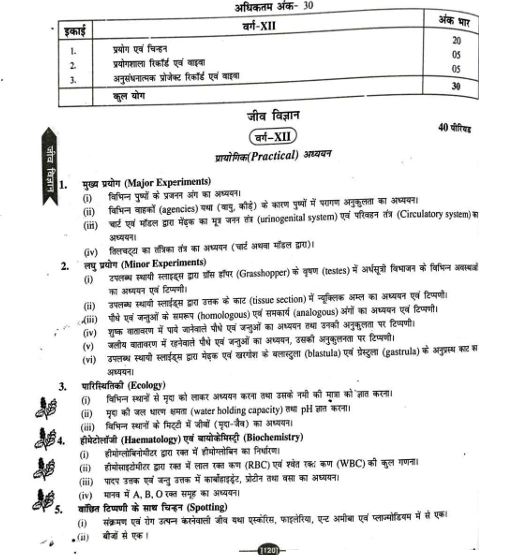

Also Read - Bihar Board Class 12 Biology Syllabus 2026
Bihar Board Class 12 Computer Science Practical Exam Syllabus 2026
Unit - 1: Programming in C++
One programming problem in C++ to be developed and tested in Computer during the examination.
Marks are allotted on the basis of following :
Logic : 05 Marks
Documentation / Indentation : 02 Marks
Output presentation : 03 Marks
Notes: The types of problems to be given will be of application type from the following topics.
- Arrays (Ose dimensional and two dimensional)
- Array of structure
- Stack using arrays and linked implementation
- Queue using arrays (circular) and linked implementation.
- Binary File Operations (Creation, Displaying. Searching and modification)
- Text-file operations (Creation, Displaying and modification).
- SQL Commands
Five Query questions based on a particular Table / Reaction to be tested practically on Computer during the examination. The command along with the result must be written in the answer sheet.
- Project Work
The project has to be developed in C++ language with Object Oriented Technology and also should have use of Data files.
- Presentation on the computer
- Project report (Listing, Sample, Outputs, Documentation)
- Viva
- Practical Fille
Must have minimum 20 programs from the following topics -
- Arrays (One dimensional and two dimensional, sorting, searching, merging, deletion de insertion of
- Arrays of structures, Arrays of Objects . Stacks using arrays and linked implementation
- Queues using arrays (linear and circular) and linked implementation.
- File (Binary and Text) operations (Creation, Updation, Query)
- Any computational based problems
15 SQL commands along with the output based on any table / relation: 3 Marks
- Viva Voce
Viva will be asked from syllabus covered in class-XII and the project developed by student.
GUIDELINES FOR PROJECTS (Class XI and XII)
- Preamble
1.1 The academic course in Computer Science includes one Project in each year. The Purpose behind this is to consolidate the concepts and practices imported during the course and to serve as a record of competence.
2 Project content
1.2 A group of two students/three students as leam may be allowed to work on one project.
2.1 Project for class XI can be selected from one of the topics given in event programming (ur)
2.2 Project for class XII should ensure the coverage of following areas of curriculum: *
- Problem Solving
- Data Structure
- Object Oriented Programming in C++
- Data File Handling
Theme of the project can be
- Any subsystem of a System Software or Tool
- Any Scientific or a fairly complex algorithmic situation.
- Business oriented problems like Banking, Library information system, Hotel or Hospital management system.
Transport query system
- Quizzes/Games:
- Tutor/Computer Aided Leaming Systems
2.3 The aim of the project is to highlight the abilities of algorithmic formulation, modular programming. optimized code preparation, systematic documentation and other associated aspects of Software Development.
2.4 The assessment would be through the project demonstration and the Project Report, which should portray Programming Style, Structured Design, Minimum Coupling. High Cohesion, Good documentation of the code to ensure readability and ease of maintenance.
Also Read - Bihar Board Class 12 Computer Science Syllabus 2025-26
Bihar Board Class 12 Guidelines for Practical Exams 2026
Check out the important guidelines mentioned by the Bihar board for smooth conduction of the practical exams.
- Bring all the stationery items with you.
- Carry the assignment file, if there is any.
- Reach your school at least half 30 minutes prior to the commencement of the practical exam.
- Read the questions in detail, understand them and then conduct the experiment.
- Do not carry any smartwatch, smartphone, or other prohibited electronic items.
- Avoid getting involved in any unfair practices.
Students can regularly visit the page for the latest information about the Bihar Board Class 12 practical exams. The updated syllabus for all subjects is provided here. Follow it to prepare for practical board exams.
Are you feeling lost and unsure about what career path to take after completing 12th standard?
Say goodbye to confusion and hello to a bright future!

FAQs
The students can go through the updated syllabus provided by the board. Going through the syllabus will help students to prepare for the practical exams.
For the Bihar Board Class 12 Commerce stream, the board will not conduct any practical exam. The practical exams will be conducted for Science subjects. Only if the students have opted for Computer Science, they will have to appear for a practical exam.
It is necessary to score at least the minimum passing marks in each of the practical exams of Bihar Board Class 12 Science subjects. The students should score at least 33% marks to pass the exam.
Yes, students will have to appear for the practical exams of all subjects of the Bihar Board Class 12 Science 2026. In Science stream, the practical exam will be conducted for all the main subjects.
It is expected that the Bihar Board Class 12 Physics practical exams will be conducted in January 2026. The practical exams will be conducted before the theory exams.
Was this article helpful?









